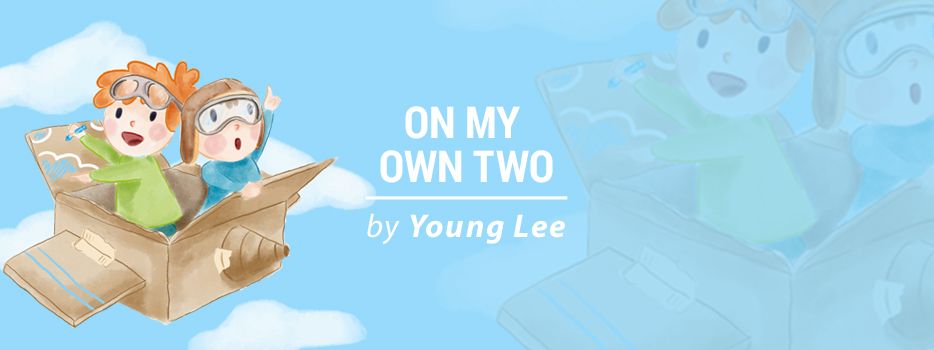If Lessons Are Gifts, CMT Handed Me a Few

I was looking at some Christmas decorations at a store the other day, a set of oversized, faux gift-wrapped boxes complete with bows and lights. And they reminded me of something I had heard before about disabilities, including Charcot-Marie-Tooth disease (CMT): For those of us affected by disability, we can consider it a gift.
I don’t know if I quite feel that way. And I’m afraid that such statements can sometimes minimize the pain and hurt many in the disability community face. Or it can act as a cudgel to silence the voice of those trying to advocate for greater accessibility.
Nonetheless, I’m at a point in my life where I can recognize some of the lessons that living with CMT teaches me. And although I don’t know if I would call CMT a gift, the opportunity to grow and learn from CMT is something I now appreciate.
So, if I consider such ongoing lessons as gifts, following are three of the several “gifts” the creator has offered by giving me the perspective of someone disabled:
Humility
In kindergarten and first grade, relay races were a frequent gym class activity. And every year, we’d have a mile run. I’d typically start out strong, but in the end, I’d inevitably end up pulling up the rear — oftentimes with scuffed knees.
It’s hard to have an inflated ego with such a history — at least when it comes to physical ability. However, throughout my life, I’ve had a bit of a stubborn and prideful streak nonetheless. But I’m learning to lean on the lessons from, frankly, being physically weak.
My natural tendency is for my physical weakness to lead to more weakness due to pride — I don’t want to fail, so for much of my life, I didn’t try.
However, I’m continuing to learn, and I appreciate the importance of asking for help and being creative with solutions. Living with CMT demands such things. And I hope I can continue to learn to apply these lessons in every aspect of my life.
Acclimation with uncertainty
This has certainly been a year filled with uncertainties and awkwardness due to everything going on right now. I feel like I’m constantly recalibrating my actions and feelings based on new information and what’s going on around me.
In some regards, it’s not unlike the uncertainty of living with CMT. I’ve learned to acclimate myself to new CMT symptoms, symptoms that have become more severe, and a growing list of things I used to be able to do but can do no longer.
I don’t think this experience has necessarily made this year easier for me, but I’m finding that in my mind, I’m approaching a lot of the uncertainty that characterizes this year in a similar way I approach my CMT.
I take comfort in the unchanging aspects that define who I am — and they aren’t my physical abilities. I also try to focus on simply doing what I can and “doing the next right thing.”
Empathy
I’m not going to argue that CMT automatically makes me a more empathetic person, because empathy, like everything else here, is something I continue to struggle with.
However, CMT has caused me pain that many folks cannot see by just looking at me. I’m a disabled person that walks invisible in an environment that isn’t always built for folks such as me and many others.
And this point of reference gives me a basis to try to understand how hard it must be for others, given the pain and injustice that they experience. And not just in the realm of ability.
I recognize how far we’ve come, and I also see how far we have to go to raise awareness and give people voices.
Again, I don’t want to glorify CMT or celebrate the struggle of living with a disability. However, I want to take advantage of opportunities to grow — to turn troubles into training, and knowledge into wisdom. And in that regard, living with CMT has helped me learn quite a bit.
***
Note: Charcot-Marie-Tooth News is strictly a news and information website about the disease. It does not provide medical advice, diagnosis, or treatment. This content is not intended to be a substitute for professional medical advice, diagnosis, or treatment. Always seek the advice of your physician or other qualified health provider with any questions you may have regarding a medical condition. Never disregard professional medical advice or delay in seeking it because of something you have read on this website. The opinions expressed in this column are not those of Charcot-Marie-Tooth News or its parent company, Bionews, and are intended to spark discussion about issues pertaining to Charcot-Marie-Tooth.







Joan Daiuto
One problem I have is not being able to keep up with friends walking. When one friend will slow their speed to walk with me, I come to realize how considerate they are. And I try to remember to have the same thoughtfulness toward others who have a "problem."
Philip Schols
What a great article, I'm not sure if you knew you had CMT when you were struggling with school sports or if you just thought you were slow. Now that I know and look back I wish I knew. Sport is such a big part of a young persons life. It does play a big part on your ego etc. If there are any other Australians reading this article or know of a similar group in Aus please let me know.
Thomas Glenn
During a stage of my 'Charcot' foot the soles of both feet became so painfully sensitive that a mere breath of air in my foot's vicinity would elicit an involuntary groan. I tried soaking chili plant leaves in vinegar ~ no help. Finally, I had a friend take me to a doctor who, happily, prescribed 300mg of gabapentim, daily. After that no recurrence of the pain.